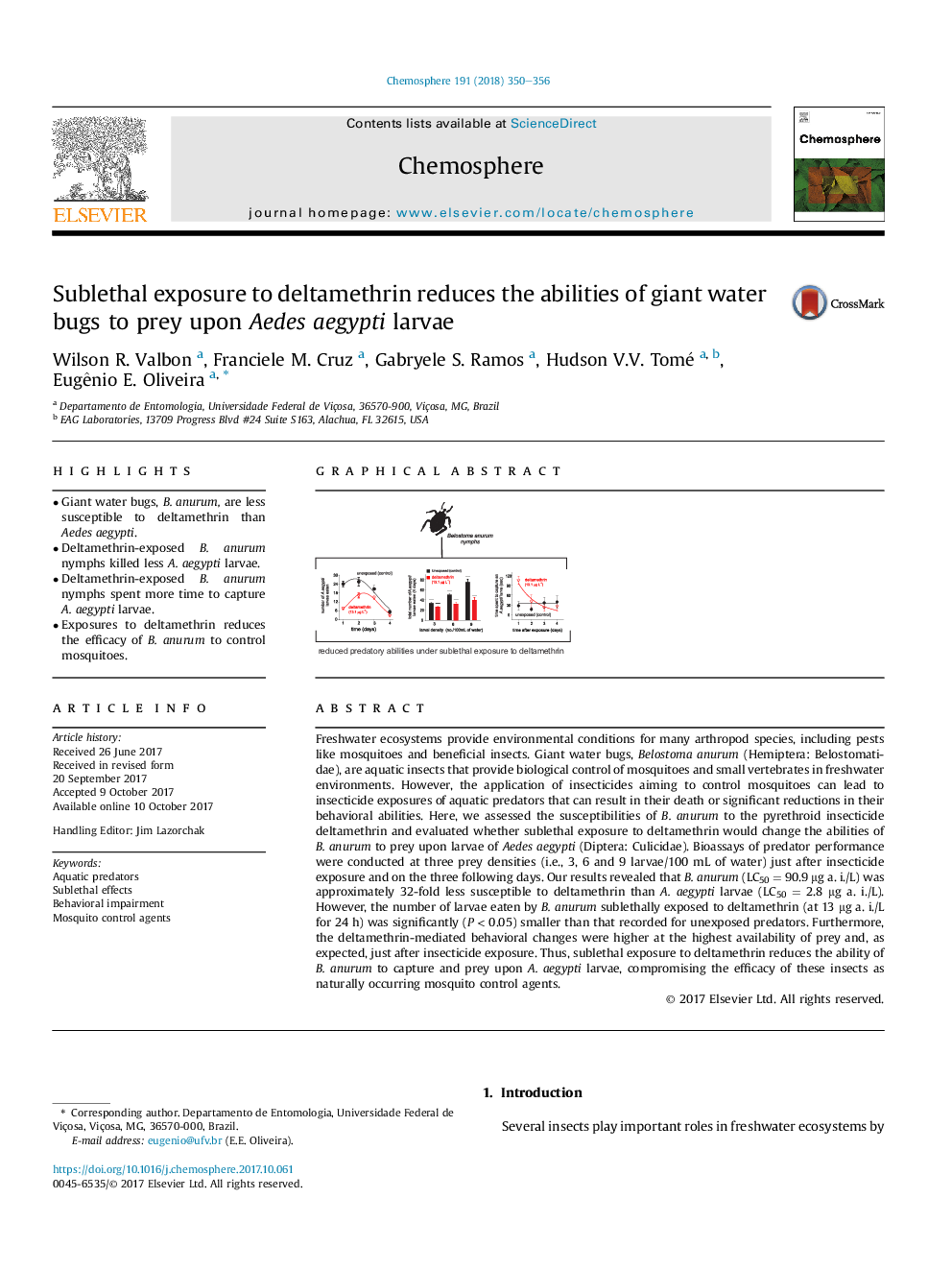| Article ID | Journal | Published Year | Pages | File Type |
|---|---|---|---|---|
| 5745738 | Chemosphere | 2018 | 7 Pages |
â¢Giant water bugs, B. anurum, are less susceptible to deltamethrin than Aedes aegypti.â¢Deltamethrin-exposed B. anurum nymphs killed less A. aegypti larvae.â¢Deltamethrin-exposed B. anurum nymphs spent more time to capture A. aegypti larvae.â¢Exposures to deltamethrin reduces the efficacy of B. anurum to control mosquitoes.
Freshwater ecosystems provide environmental conditions for many arthropod species, including pests like mosquitoes and beneficial insects. Giant water bugs, Belostoma anurum (Hemiptera: Belostomatidae), are aquatic insects that provide biological control of mosquitoes and small vertebrates in freshwater environments. However, the application of insecticides aiming to control mosquitoes can lead to insecticide exposures of aquatic predators that can result in their death or significant reductions in their behavioral abilities. Here, we assessed the susceptibilities of B. anurum to the pyrethroid insecticide deltamethrin and evaluated whether sublethal exposure to deltamethrin would change the abilities of B. anurum to prey upon larvae of Aedes aegypti (Diptera: Culicidae). Bioassays of predator performance were conducted at three prey densities (i.e., 3, 6 and 9 larvae/100 mL of water) just after insecticide exposure and on the three following days. Our results revealed that B. anurum (LC50 = 90.9 μg a. i./L) was approximately 32-fold less susceptible to deltamethrin than A. aegypti larvae (LC50 = 2.8 μg a. i./L). However, the number of larvae eaten by B. anurum sublethally exposed to deltamethrin (at 13 μg a. i./L for 24 h) was significantly (P < 0.05) smaller than that recorded for unexposed predators. Furthermore, the deltamethrin-mediated behavioral changes were higher at the highest availability of prey and, as expected, just after insecticide exposure. Thus, sublethal exposure to deltamethrin reduces the ability of B. anurum to capture and prey upon A. aegypti larvae, compromising the efficacy of these insects as naturally occurring mosquito control agents.
Graphical abstractDownload high-res image (173KB)Download full-size image
